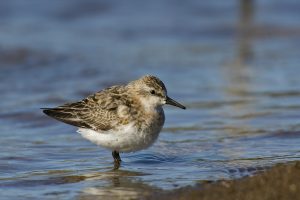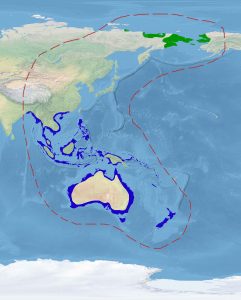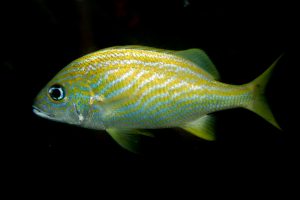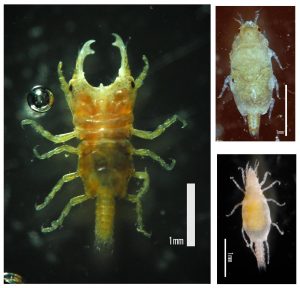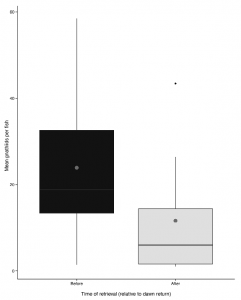Northward range expansion in spring-staging barnacle geese is a response to climate change and population growth, mediated by individual experience
By Gaitlyn Malone, SRC Masters Student
As climate change continues to rapidly alter environments, it is important to investigate how these changes impact the species that utilize these areas. When faced with these alterations, organisms will often have to adjust their behaviors in order to increase their survival. Animals that migrate long distances in order to meet their fitness needs are a great example of species that will often have to modify their behavior since they depend on different environments that are often far apart from one another and may change at varying rates. However, the means by which these organisms adjust can differ and there is very little knowledge about how many of these responses come about.

Figure 1: Barnacle Goose (Source: Dr. Raju Kasambe, Wikimedia Commons)
A recent study investigated how an increasing population of barnacle geese (Branta leucopsis) responded to the environmental changes occurring within their two spring-staging areas located in Helgeland and Vesterålen, Norway (Tombre et al. 2019). The southernmost staging area, located in Helgeland, had been traditionally used by the barnacle geese, however since the mid-1990s, an increasing number of geese had started to stage in Vesterålen, located 250 km north of Helgeland. From 1975 until 2017, the authors collected information on goose population numbers as well as weather conditions in order to determine the extent to which these characteristics contributed to the alteration in staging area use by both new recruits in the population and older individuals that altered their migratory strategy at a later stage in life. To determine whether climate change was a contributing factor to the diversity in population distribution, the authors estimated foraging conditions at both locations to see if differences in food conditions as well as increasing competition over resources due to population growth led to the change in staging area use.

Figure 2: Spring migrations routes and staging areas of barnacle geese (Source: Tombre et al. 2019)
Through their work, it was determined that while there was enhanced grass growth in Helgeland, the condition of foraging materials remained stable over time. However, in Vesterålen production of digestible materials increased, leading the authors to believe that the changing conditions in this area contributed to the change in the barnacle geese’s range. Additionally, it was determined that the population growth at Vesterålen occurred through to two different processes. First, during the initial years of colonization and after, young geese tended to switch to Vesterålen first and comprised the highest numbers within the flock. Secondly, it was also found that while older birds had a decreased probability of switching from Helgeland to Vesterålen, over time the probability increased for all ages. These findings suggest that barnacle geese use both social learning and individual experiences to adjust in their behavior and respond rapidly to climate change. These results are one of the first to portray the role that individual decisions play in population scale patterns and add to the growing knowledge on the importance of social learning in the development of migratory behaviors.
Works cited:
Tombre IM, Oudman T, Shimmings P, Griffin L (2019) Northward range expansion in spring ‐ staging barnacle geese is a response to climate change and population growth , mediated by individual experience. 1–14. doi: 10.1111/gcb.14793

